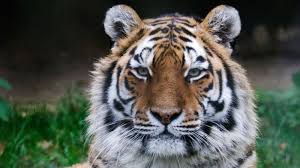
Introduction: The Importance of Tigers
Tigers are not only magnificent creatures but also play a crucial role in maintaining the health of the ecosystems in which they inhabit. As apex predators, their presence is vital for the balance of the food chain. Unfortunately, tiger populations are declining due to habitat loss, poaching, and human-wildlife conflict. Marwell Zoo, located in Hampshire, England, is actively involved in tiger conservation, making it a significant player in the global fight to protect these endangered species and educate the public about their plight.
Current Situation of Tigers at Marwell Zoo
Marwell Zoo is home to a number of Amur tigers, one of the largest tiger subspecies and also one of the most endangered. As of 2023, the zoo has successfully established a breeding programme aimed at increasing the genetic diversity of this subspecies. Recent efforts have seen the births of several cubs, providing a hopeful glimpse into the future of tiger conservation. This breeding initiative is part of a larger international effort among accredited zoos to bolster the Amur tiger population, which has dwindled to approximately 500 individuals in the wild.
Conservation and Education Initiatives
The role of Marwell Zoo goes beyond just housing these magnificent big cats; it extends into conservation education for visitors. The zoo runs various programmes designed to inspire and inform the public about the importance of protecting tigers and their habitats. Through informative displays, guided tours, and educational workshops, visitors of all ages learn about the threats tigers face and what they can do to help. Additionally, funds generated from zoo admission fees contribute to global conservation projects aimed at tiger protection and habitat preservation.
Community Engagement and Global Efforts
Marwell Zoo also engages with local and global communities to enhance tiger conservation efforts. Collaborative projects with international organisations facilitate research and on-the-ground conservation initiatives. By investing in anti-poaching measures and habitat restoration in tiger-range countries, Marwell Zoo aims to improve conditions for wild tigers. These projects are critical, as they not only address immediate threats but also foster long-term solutions to ensure the survival of tigers in their natural environment.
Conclusion: The Future of Tigers
The future of tigers hangs in the balance, but organisations like Marwell Zoo offer a beacon of hope. Their commitment to breeding, education, and global conservation initiatives underscores the importance of collective action to protect these iconic animals. As these tigers thrive in the safe environment of the zoo, they serve as ambassadors for their wild counterparts, reminding us that every effort counts in the quest to save these majestic creatures. By visiting Marwell Zoo, the public can play a part in this crucial mission, raising awareness and contributing to a better future for tigers worldwide.
You may also like

Understanding Mosquera Wolves and Their Conservation Needs

The Lasting Legacy of Jane Goodall in Conservation
